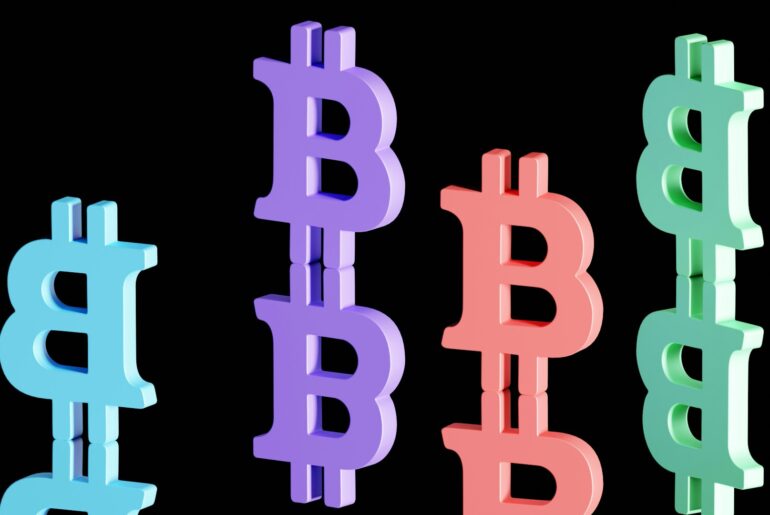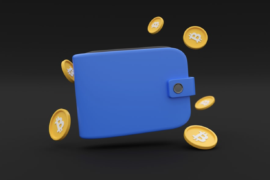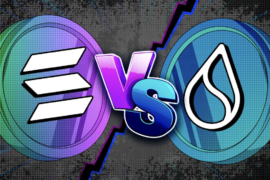This article may contain references to products or services from one or more of our advertisers or partners. We may receive compensation when you click on links to those products or services. Nonetheless, our opinions are our own.
Web3 is diverse, with multiple networks like Bitcoin, Ethereum, and Solana operating independently. While this diversity offers flexibility, it also presents a challenge: how do you move assets between different blockchains efficiently?
This is where cross-chain swaps come in.
If you’ve ever wanted to swap one token for another token on another blockchain without relying on a centralized exchange, this guide is for you.
What Are Cross-Chain Token Swaps?
A cross-chain swap is a decentralized process that allows users to exchange assets and cryptocurrency between two different blockchains.
Instead of transferring assets through a centralized exchange, cross-chain swaps utilize smart contracts and bridge technologies to enable seamless asset exchanges.
How Do Cross-Chain Swaps Work?
Since different blockchains operate independently with unique consensus mechanisms, enabling direct asset transfers requires sophisticated solutions that ensure security, transparency, and efficiency.
Here’s how the core technologies behind cross-chain swaps work:
Atomic Swaps
Atomic swaps allow two parties to exchange assets across different blockchains without needing a trusted third party. These swaps use a smart contract that ensures both parties fulfill the agreed-upon conditions before the trade completion.
If either party fails to meet the conditions—such as not sending the correct amount of tokens within a specified timeframe—the transaction is automatically reversed, ensuring no funds are lost.
Blockchain Bridges
Blockchain bridges act as intermediaries that lock assets on one blockchain and issue equivalent tokens on another.
When a user wants to move assets from blockchain A to blockchain B, the bridge locks the original tokens in a smart contract on blockchain A and mints an equivalent amount of wrapped tokens on blockchain B. This allows users to interact with ecosystems that wouldn’t natively support their assets.
Liquidity Pools
Some decentralized exchanges (DEXs) and liquidity providers facilitate cross-chain swaps by maintaining liquidity pools on multiple blockchains.
Users can deposit tokens into these pools, allowing others to swap between assets without waiting for peer-to-peer matches. These pools are usually governed by automated market maker (AMM) models, ensuring trades are executed based on algorithmic pricing.
Pros & Cons of Cross-Chain Swapping
Now, let’s look at the benefits and drawbacks of swapping using decentralized protocols instead of on centralized trading platforms.
Pros of Cross-Chain Swaps
- Decentralization: Cross-chain swaps operate without intermediaries, allowing users to trade assets directly between blockchains without relying on centralized exchanges.
- Typically lower fees: Cross-chain swaps minimize the number of transactions required and streamline this process by enabling direct asset transfers between blockchains.
- Speed: Cross-chain swaps execute transactions within minutes, significantly improving settlement speed versus depositing, trading, and withdrawing on centralized exchanges.
- Greater accessibility: Cross-chain swaps remove the friction of moving assets between blockchains, allowing users to explore different DeFi protocols, NFT marketplaces, and staking opportunities
Cons of Cross-Chain Swaps
- Smart contract vulnerabilities: Cross-chain swaps rely on smart contracts and interoperability protocols, which can be vulnerable to bugs or exploits.
- Complex user experience: Cross-chain swaps can be confusing for non-technical users. Managing different blockchain networks, gas fees, and wallet configurations can be overwhelming and lead to mistakes.
How to Cross-Chain Swap Tokens: An Example
If you’re looking for a seamless way to swap assets across different blockchains, Xverse cross-chain swaps offer an intuitive solution. Xverse integrates trustless cross-chain swaps, allowing users to exchange assets across other blockchain networks, such as Solana or Ethereum, without intermediaries.
Here’s how a cross-chain swap works on Xverse Swaps:

- Download and set up Xverse Wallet: To get started, you need to install the Xverse wallet on your preferred device. It is available as a browser extension for Chrome and as a mobile app for iOS and Android. You can create a new wallet or import an existing one.
- Select the cross-chain swap feature: Navigate to the swap function within the Xverse Web App. Ensure you have a sufficient balance of the required assets, including network fees.
- Choose the assets you want to swap: You’ll need to configure the swap by selecting the blockchain networks and assets you wish to exchange. Select the sending blockchain, the asset you want to swap, the receiving blockchain, and the swap amount.
- Confirm and execute: Carefully review the transaction details to ensure accuracy before proceeding. Check the gas fees and confirm that you’re swapping to the correct blockchain and confirm the swap.
- Receive your assets: Once the swap is completed, your new assets will appear in your wallet. The transaction time may vary depending on blockchain congestion and the method used for the swap.
Final Thoughts
Cross-chain swaps are changing how users interact with different blockchain ecosystems by making asset transfers seamless, secure, and decentralized. While they offer speed, lower fees, and greater accessibility, they also come with risks like smart contract vulnerabilities and liquidity constraints.
Understanding how these swaps work and choosing reliable wallets can help users navigate the multi-chain landscape more efficiently. Cross-chain swaps will likely become a standard feature in crypto wallets as interoperability improves.

Reviewed and edited by Albert Fang.
See a typo or want to suggest an edit/revision to the content? Use the comment form below for feedback.
At FangWallet, we value editorial integrity and open collaboration in curating quality content for readers to enjoy. Much appreciated for the assist.
Did you like our article and find it insightful? We encourage sharing the article link with family and friends to benefit as well - better yet, sharing on social media. Thank you for the support! 🍉
Article Title: What Are Cross-Chain Swaps? A Beginner’s Guide
https://fangwallet.com/2025/04/01/what-are-cross-chain-swaps-a-beginners-guide/The FangWallet Promise
FangWallet is an editorially independent resource - founded on breaking down challenging financial concepts for anyone to understand since 2014. While we adhere to editorial integrity, note that this post may contain references to products from our partners.
The FangWallet promise is always to have your best interest in mind and be transparent and honest about the financial picture.
Become an Insider
Editorial Disclaimer: The editorial content on this page is not provided by any of the companies mentioned. The opinions expressed here are the author's alone.
The content of this website is for informational purposes only and does not represent investment advice, or an offer or solicitation to buy or sell any security, investment, or product. Investors are encouraged to do their own due diligence, and, if necessary, consult professional advising before making any investment decisions. Investing involves a high degree of risk, and financial losses may occur including the potential loss of principal.
Source Citation References:
+ Inspo
There are no additional citations or references to note for this article at this time.












































